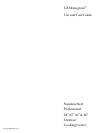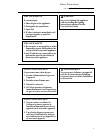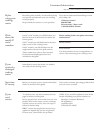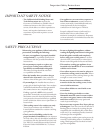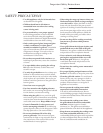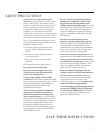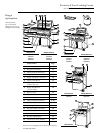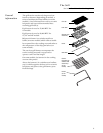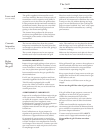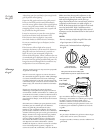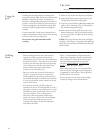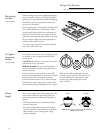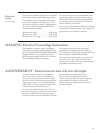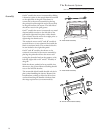Special offers from our partners!

Find Replacement BBQ Parts for 20,308 Models. Repair your BBQ today.

• At least once a year, the unit should be
inspected for the presence of spiders, spider
webs or other insects. The burner area is a
common and desired spider haven and can
present a dangerous condition which can
damage the cooking center and render it
unsafe for use. The presence of spiders,
spider webs or other insects can cause the gas
to flow from the front of the burner. This is a
very dangerous condition which can cause a
fire to occur behind the valve panel. Check
the cooking center immediately if any of the
following conditions exist:
1. The smell of gas in conjunction with
extreme yellow tipping of the burner
flames.
2. The grill or range-top burners do not
reach temperature.
3. The grill or range-top burners heat
unevenly.
4. The burners make popping noises.
• Do not use charcoal on the grill.
• Keep any electrical supply cord, or the
rotisserie motor away from the heated
areas of the cooking center.
• Never use the cooking center in windy
conditions. If located in a consistently windy
area (oceanfront, mountaintop, etc.) a wind
break will be required. Always adhere to
the specified clearances listed in the
installation instructions.
• The
24˝
professional grill is designed for
single rows of ceramic briquettes to be
placed in the stainless steel radiant trays
above the grill burners. To avoid blocking
off the area for the grill burners to vent, do
not place the ceramic briquettes over the
holes in the stainless steel radiant trays.
Placing the ceramic briquettes over the
holes in the stainless steel radiant trays can
damage ignition components and knobs
and void the warranty.
• The
27˝, 36˝ and 48˝
professional grills are
designed for a single layer of lava rock to
be spread evenly over the stainless steel
radiant tray above the grill burners. To avoid
blocking off the area for the grill burners to
vent, do not use more than a single layer of
lava rock. Adding excess rock can damage
ignition components and knobs and void
the warranty.
•
If a cart unit is stored indoors ensure
that it is cool before attempting to move it.
If LP, the cylinder must be unhooked and
the LP cylinder stored outside in a well
ventilated area, out of the reach of children.
From the caster side of the cooking center
push, never pull, the cooking center.
• Never use a dented or rusty LP tank. See the
requirements in the installation instructions.
• Never put more than one LP cylinder below
a cart-mounted cooking center. Never modify
the cart to house a larger cylinder or more
than one cylinder at a time. Do not store
spare tanks in a built-in enclosure.
• Keep the ventilation openings of the LP
cylinder enclosure free and clear from debris.
• LP units require an LP tank equipped
with a type 1 connector and an over-fill
protection device. If you use a tank
exchange system, be sure to exchange this
tank for a similarly equipped tank.
• Cook meat and poultry thoroughly—meat to
at least an INTERNAL
160°F.
and poultry
to at least an INTERNAL
180°F
. Cooking
to these temperatures usually protects
against foodborne illness.
SAVE THESE INSTRUCTIONS
7
SAFETY PRECAUTIONS



